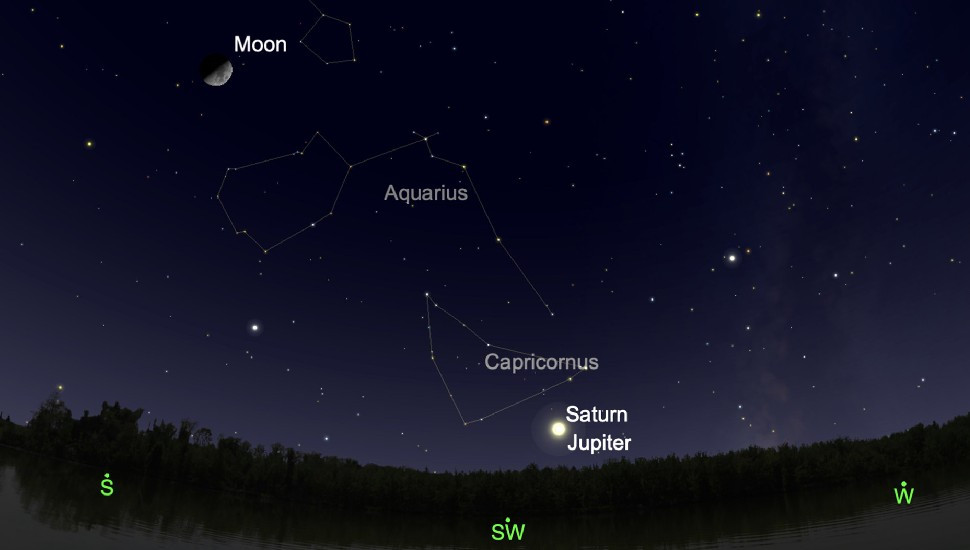
In a rare celestial event, Jupiter and Saturn, two of the solar system’s largest planets will be closest to each other on Monday, December 21, the first time in nearly 400 years. The union of Jupiter and Saturn is being termed as the ‘great conjunction’ as the planets will be just 0.1 degrees apart or about one-fifth the apparent width of the Moon. Such an event will not happen again in the next 60 years, that is, until 2080.
“Alignments between these two planets are rather rare, occurring once every 20 years or so, but this conjunction is exceptionally rare because of how close the planets will appear to one another. You’d have to go all the way back to just before dawn on March 4, 1226, to see a closer alignment between these objects visible in the night sky,” Patrick Hartigan, Professor of Physics and Astronomy at Rice University in Houston, Texas, said in a statement.
What is great conjunction?
In 1610, Italian astronomer Galileo Galilei pointed his telescope to the night sky, discovering the four moons of Jupiter Io, Europa, Ganymede, and Callisto. In that same year, Galileo also discovered a strange oval surrounding Saturn, which later observations determined to be its rings.
Thirteen years later, in 1623, the solar system’s two giant planets, Jupiter and Saturn, traveled together across the sky. Jupiter caught up to and passed Saturn, in an astronomical event known as a “Great Conjunction.”
Great conjunction occurs approximately every 20 years, because of the time each of the planets take to orbit around the Sun. The 2020 great conjunction of Jupiter and Saturn will be the closest since 1623.
How can you spot the great conjunction?
NASA recommends that viewers should find a spot with an unobstructed view of the sky, such as a field or park. Jupiter and Saturn are bright, so they can be seen even from most cities.
An hour after sunset, look to the southwestern sky. Jupiter will look like a bright star and be easily visible. Saturn will be slightly fainter and will appear slightly above and to the left of Jupiter until December 21, when Jupiter will overtake it and they will reverse positions in the sky.
The planets can be seen with the unaided eye, but if you have binoculars or a small telescope, you may be able to see Jupiter’s four large moons orbiting the giant planet.
 Sri lanka Muslims Web Portal Diversity and Inclusiveness
Sri lanka Muslims Web Portal Diversity and Inclusiveness



